A peek into the sometimes elusive world of the Caribbean’s Piping Plover and the challenges of finding them on their wintering grounds. Elise Elliott-Smith reports Caribbean results for the 2016 International Piping Plover Census, held every 5 years.
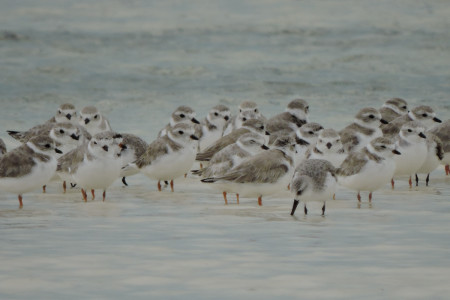
I’ll never forget the excitement, relief, and wonder I felt in seeing a group of ten Piping Plovers (Charadrius melodus) on Little Water Cay, Turks and Caicos Islands. It was January 27, our first day of the 2016 International Piping Plover Census, and I had been more than a little anxious that we might not see any at all. I had made contact with Eric Salamanca of the Turks and Caicos Department of the Environment and Coastal Resources (DECR) through BirdsCaribbean, and with the assistance of the US Fish and Wildlife Service (USFWS) we successfully launched the first ever Piping Plover census in the Turks and Caicos Islands. Many people helped make this possible although it had been challenging getting the necessary funding, permits, and planning. Aerial images of the habitat looked good but there were only a handful of reports of only one or two Piping Plover in TCI, and more than one person had discouraged me from trying to survey there.
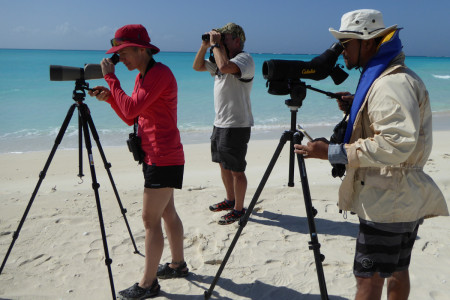
Nevertheless, against all odds our census confirmed that these little birds had successfully flown over one thousand miles from their North American breeding grounds to land here on Little Water Cay, an island inhabited only by the critically endangered Turks and Caicos Iguana and other native wildlife. As we excitedly set up our scopes, the Piping Plovers quietly foraged on a little sand-spit near a couple of American Oystercatchers and a small fishing boat.
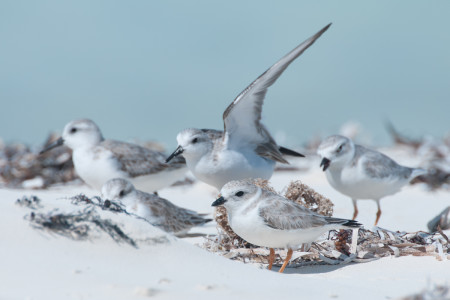
Piping Plover are a threatened/ endangered shorebird that breed in North America along the Atlantic Coast (Charadrius melodus melodus) and the interior’s Great Lakes and Great Plains regions (Charadrius melodus circumcinctus) of Canada and the United States. They are better studied on their breeding grounds, and their tendency to disperse across their winter grounds makes monitoring and conservation efforts quite a challenge. In order to understand their distribution and track changes in populations, the International Piping Plover Census has been conducted every five years since 1991 across the bird’s winter and breeding range. Counts are always lower during winter, and we suspected we were missing birds outside the U.S. However, we didn’t have an inkling of the importance of the Caribbean to this at-risk species until we found over 400 Piping Plover in the Bahamas in 2006 and around 1,000 in 2011.
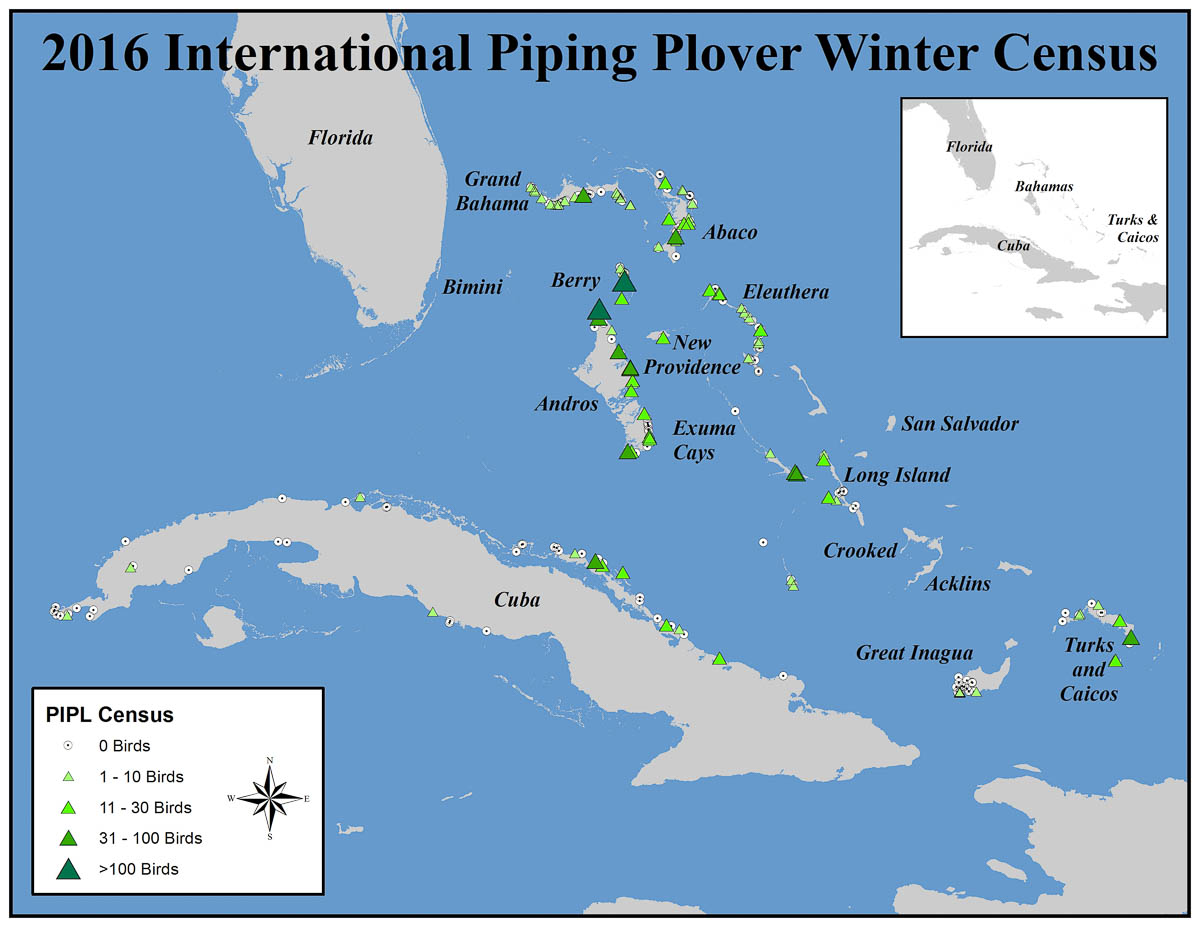
During the 2016 International Piping Plover Census we coordinated the biggest search to date for this species in the Bahamas and northern Caribbean, resulting in over 1,500 observations. Multi-national teams of biologists and volunteers from the Bahamas National Trust, National Audubon, US Geological Survey, US Fish and Wildlife Service, Canadian Wildlife Service, Conserve Wildlife Foundation of New Jersey, BirdsCaribbean, and many others surveyed the Bahamas, Cuba, and Turks and Caicos Islands. The Piping Plover surveys were well-publicized with instructions and identification tips published on eBird Caribbean, helping to garner support and volunteers counters. Surveys on other Caribbean islands were conducted as part of the Caribbean Waterbird Census; incidental reports also helped increase our understanding of this species’ presence in the Caribbean.
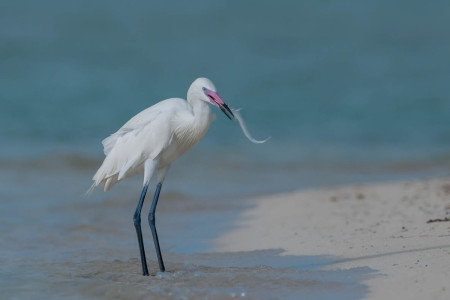
It is an exciting time for biologists wishing to learn more about the distribution of Piping Plover and threats it faces during the non-breeding season. We also learned about other shorebird species in the Caribbean, including Wilson’s Plover and Snowy Plover, which is crucial to understanding why many shorebird species are declining, as well as learning more about their winter distribution. Although their eggs and young are vulnerable, recovery of the Piping Plover and other species depends on protection across their life-cycle. For example, the 2011 Census led to the designation of a National Park and Important Bird Area in the Bahamas. The 2016 results will hopefully inform many other conservation initiatives. Below is a summary of the Census on different islands/ island groups and additional photos and maps showing locations of surveys and numbers of different species of plovers that were counted.
Cuba 2016
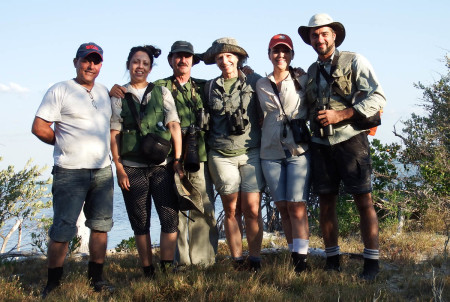
For the fifth time (5 out of 6 census years) the Canadian Wildlife Service partnered with local Cuban biologists to survey sites on the Caribbean’s largest island. 2016 marked a new collaboration with the University of Havana’s Bird Ecology Group led by Dr. Ariam Jiménez. Surveys differed from previous years in that there was greater capacity and improved coverage, with the addition of new survey sites and more local engagement.
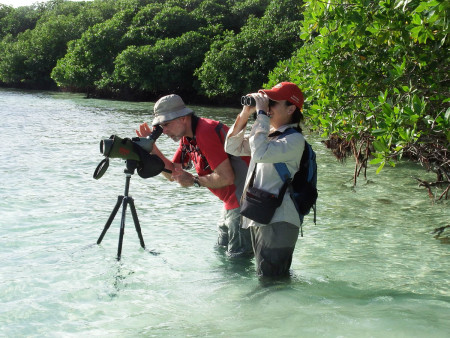
A total of 105 Piping Plover were detected, an increase from the previous count of 89 birds during the 2006 census. Without a doubt, one highlight was identifying five banded birds from various breeding grounds including: Atlantic US, U.S. Great Lakes, U.S. Great Plains and Eastern Canada. However, our greatest delight was spotting birds from home: one banded in New Brunswick’s Acadian Peninsula and the other on the island of Newfoundland – the latter where only 12 birds have previously been banded! Overall the trip was a great success and we are happy to have engaged the expertise of the University of Havana; all of which was made possible via partnerships with Birds Studies Canada and through connections made via BirdsCaribbean.
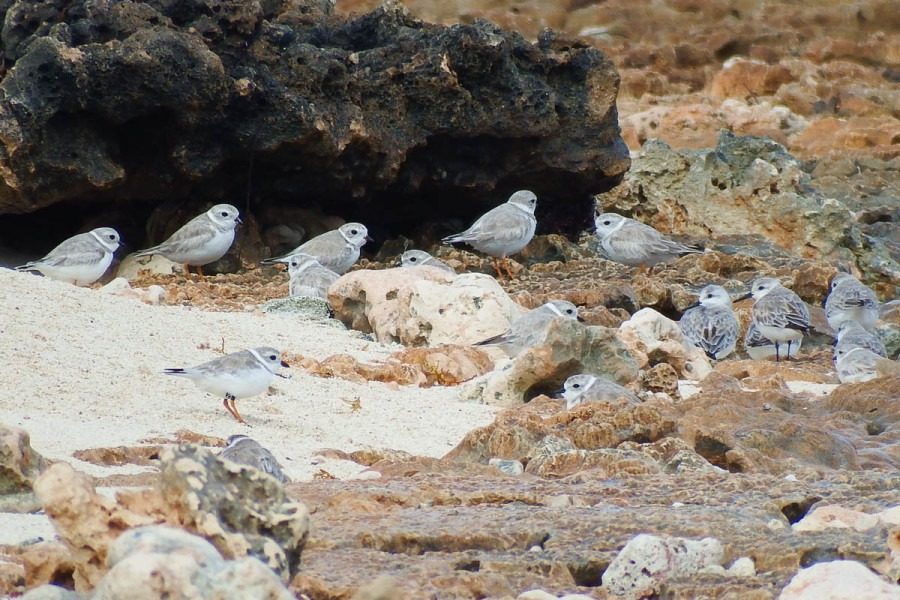
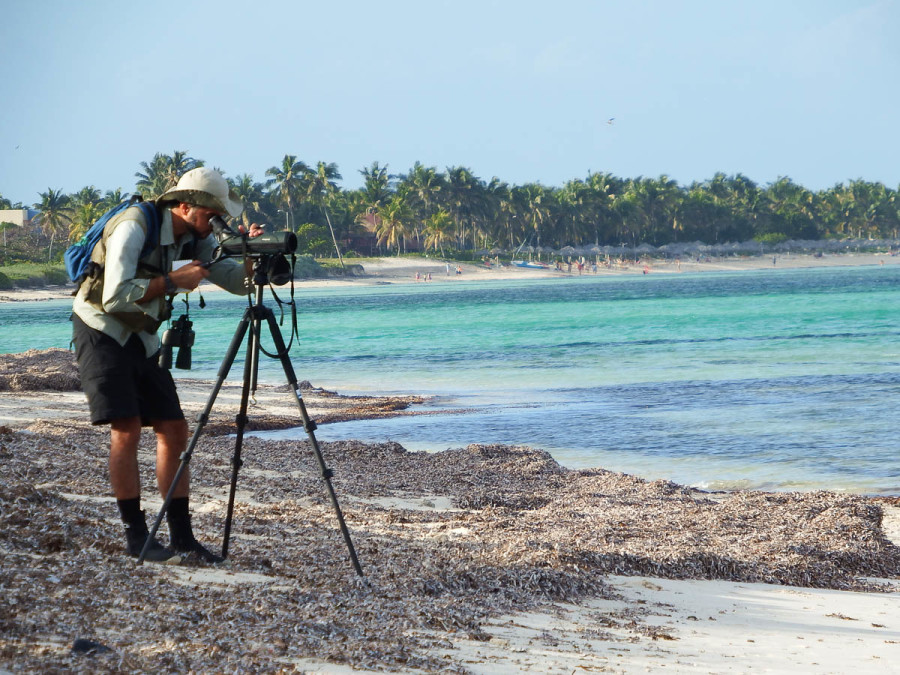
The Bahamas 2016
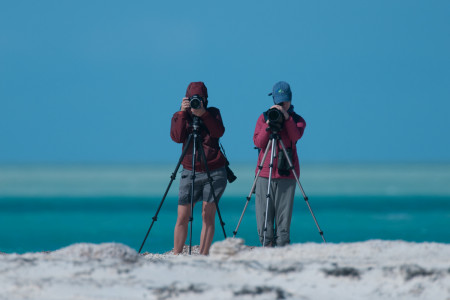
Between January 18 and 25, teams of Bahamians, U.S. and Canadian scientists spread out across the Bahama Archipelago to participate in the 2016 International Plover Census. The census was coordinated by Bahamas National Trust, Audubon, USGS and Conserve Wildlife Foundation of New Jersey. Funding from USFWS, Disney and Audubon, helped engage an impressive thirty Bahamian volunteers who joined international scientists and volunteers to participate, develop skills, and increase our collective knowledge of shorebirds across the Bahamas.
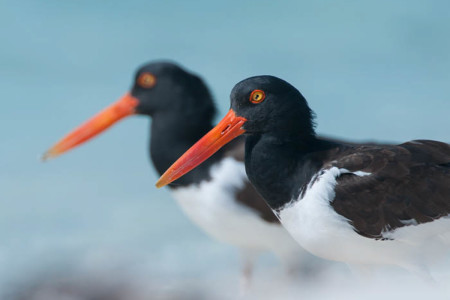
Faced with many logistical challenges and some uncooperative weather, the teams still managed to survey Grand Bahama, Abaco, Eleuthera, Harbour Island, Andros, New Providence, Inagua, the Berry Islands, the Joulter Cays, Water Cays, the Exumas and Ragged Island chain. Shorebird research and improved Bahamian capacity between the 2011 and 2016 censuses helped focus efforts, which resulted in a successful count and the final data points to create at least two new Important Bird and Biodiversity Areas. The total number of Piping Plovers counted seen is still being finalized but is between 1,350 and 1,400, an increase from 2011 effort. Several banded birds were tracked back to their breeding grounds in the United States and Canada.
Turks and Caicos Islands 2016
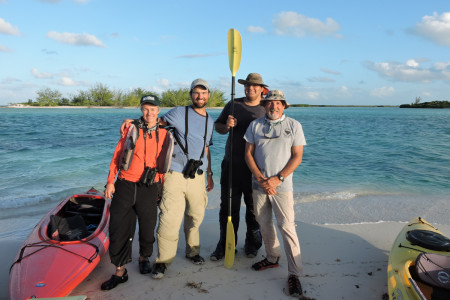
The 2016 Census was the first ever survey for Piping Plover on any of the Turks and Caicos Islands (TCI), thanks to support from USFWS Migratory Birds, two USFWS and a USGS biologist worked with local biologists from the TCI Dept of Environment and Coastal Resources (DECR). Additionally, a School for Field Studies professor accompanied us on one survey and we received support from local boat and fishing guides. Many of the larger Islands and smaller Cays were surveyed including Providenciales, North Caicos, Middle Caicos, South Caicos, Little Ambergris Cay, Dick Hill Cay, and others. Piping Plover were found throughout the Turks and Caicos Islands on 6 different islands/cays.
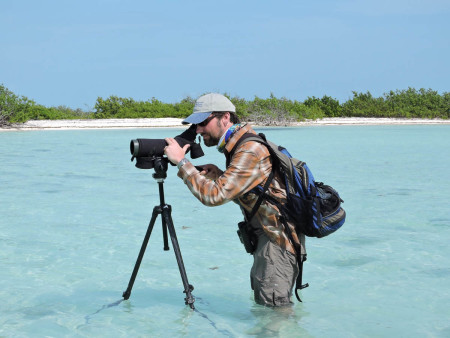
The preliminary total for surveys in the Turks and Caicos Islands was 96. Since little is known about shorebirds in Turks and Caicos and there is conservation concern for other species, efforts were made to record all shorebirds encountered, resulting in over 3,200 shorebirds from 17 species. We surveyed many of the most promising areas in the Turks and Caicos Islands, however there is additional habitat that we were unable to explore. The highlight of the trip was finding a flock of 42 Piping Plover on a small cay near South Caicos, including banded birds from New Brunswick (Canada), Massachusetts, and Rhode Island (U.S.).
Other Islands
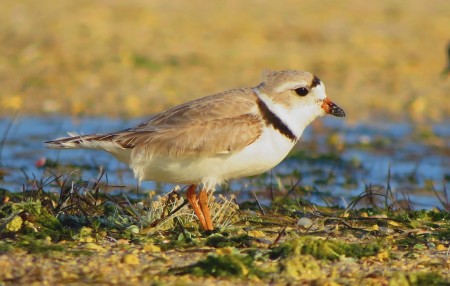
Although unable to organize surveys on other Caribbean islands as part of the 2016 International Census, we requested participants in the Caribbean Waterbird Census to make an effort to visit suitable habitat to look for Piping Plovers. Two surveys were conducted in Aruba but no Piping Plovers were seen. However, two were seen incidentally in Bonaire after the census in early March. Small numbers of Piping Plover have been reported in prior years on islands throughout the Caribbean including the Dominican Republic, Puerto Rico, Antigua, St. Croix, Guadeloupe, and others. Generally these reports have been of only one or two birds, but there was one sighting of a group of 12 observed in the Dominican Republic in 2006. Since the Piping Plover is rare, cryptic, and widely dispersed in winter they could be more widespread in the Caribbean than we know at this time. Hence, we encourage biologists and birders on all islands to look for them on sand-spits, beaches, and other unvegetated or sparsely vegetated habitat on or adjacent to the shore.
Looking Forward to 2021 and Beyond
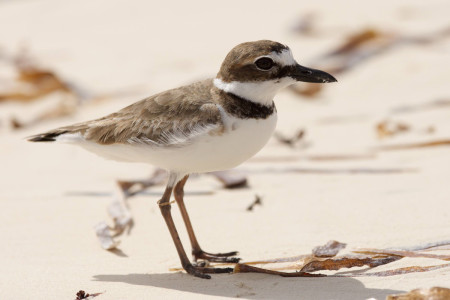
Participating in the 2016 International Census was an amazing experience and I long to return in order to explore further and access sites we couldn’t get to in 2016. Flying from South Caicos to Providenciales in a tiny Twin Otter, I had a view of all the Caicos and little cays and it was impossible not to be struck by the beauty of the crystal clear waters and wonderful habitat. One thing that surprised me was the breadth of undeveloped and lightly developed land in Turks and Caicos. I did not realize that such areas still existed in the Caribbean, and these areas are an excellent resource for locals, visitors and birds. Birding eco-tourism is being promoted by the Turks and Caicos National Museum and the Tourism Board. National Audubon has been doing great work training locals in the Bahamas. Bird and nature tourism is also being developed throughout the Caribbean through the Caribbean Birding Trail, which has trained guides in Grenada, Jamaica and the Dominican Republic. There is huge potential for much more, as long as natural areas are protected. Learning more about Piping Plovers and other shorebird species in the Caribbean informs conservation efforts and leverages international support to protect the vital habitat on which they depend. So, open your field guides to the shorebird section and read up on your plovers, then go look for them next winter, participate in the 2021 International Piping Plover Census, take pictures, and report all your observations on eBird Caribbean (and any Piping Plover sightings to me as well please!). With luck and your help, we might ensure that this fascinating but vulnerable shorebird remains for future generations to enjoy. Elise Elliott-Smith is a Wildlife Biologist for US Geological Survey Forest and Rangeland Ecosystem Science Center in Corvallis, Oregon. She works on a variety of research and monitoring projects related to shorebird species of conservation concern. Email: eelliott-smith@usgs.gov Many thanks to Jen Rock (Canadian Wildlife Service) and Matt Jeffery (National Audubon Society) for summary information on the counts in Cuba and the Bahamas, respectively, and Karen Aguilar Mugica for the Cuba maps. P.S. Please continue to look for Piping Plovers whenever you are visiting coastal areas and/or doing a Caribbean Waterbird Census count. Plover identification tips and photographs are available here. Enter your checklists in eBird Caribbean and help advance our knowledge of all Caribbean waterbirds. Be on the lookout for banded birds and do your best to read the band colors and flags as described at this website and be sure to report any banded bands you see. Thanks! P.P.S. Guide booklets on bird-watching in the Turks and Caicos Islands are available at this website.
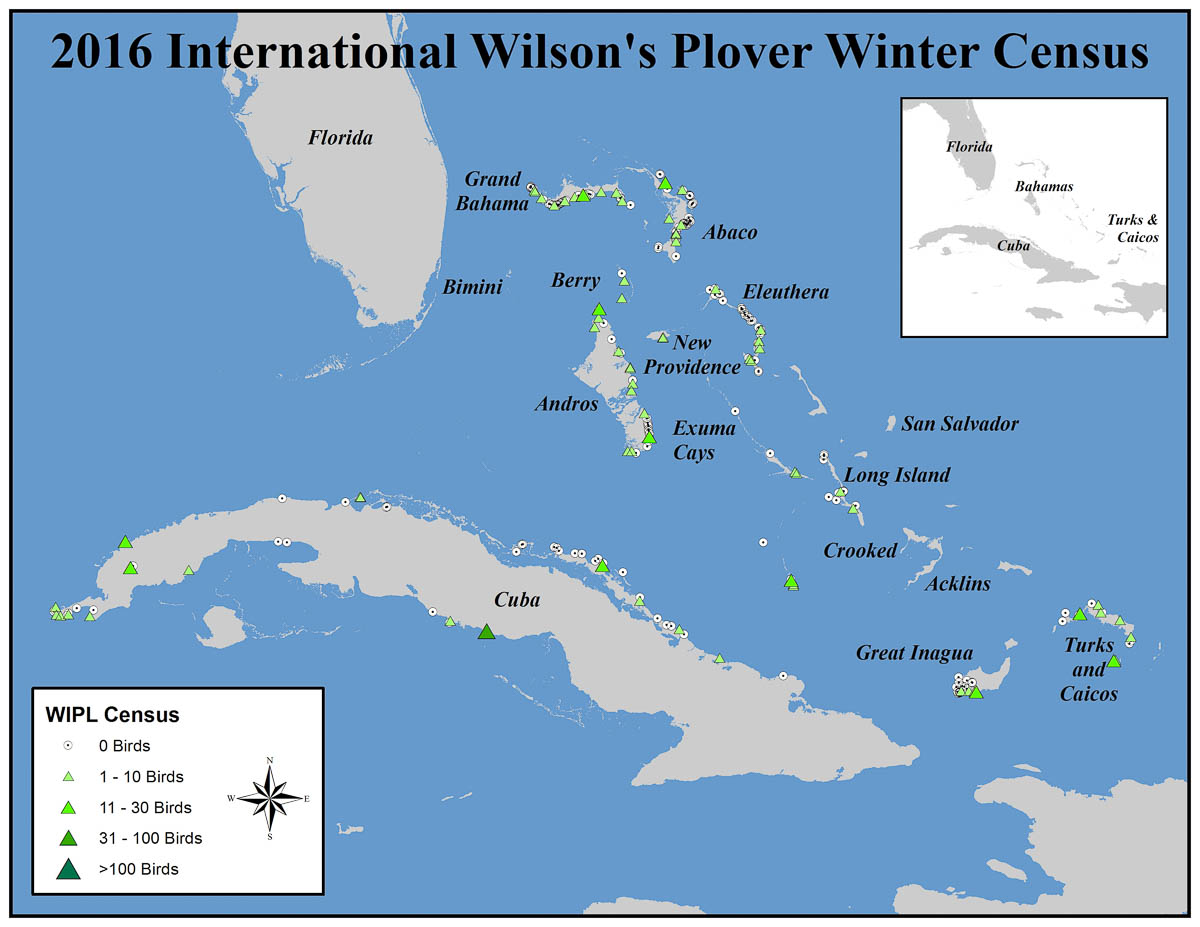
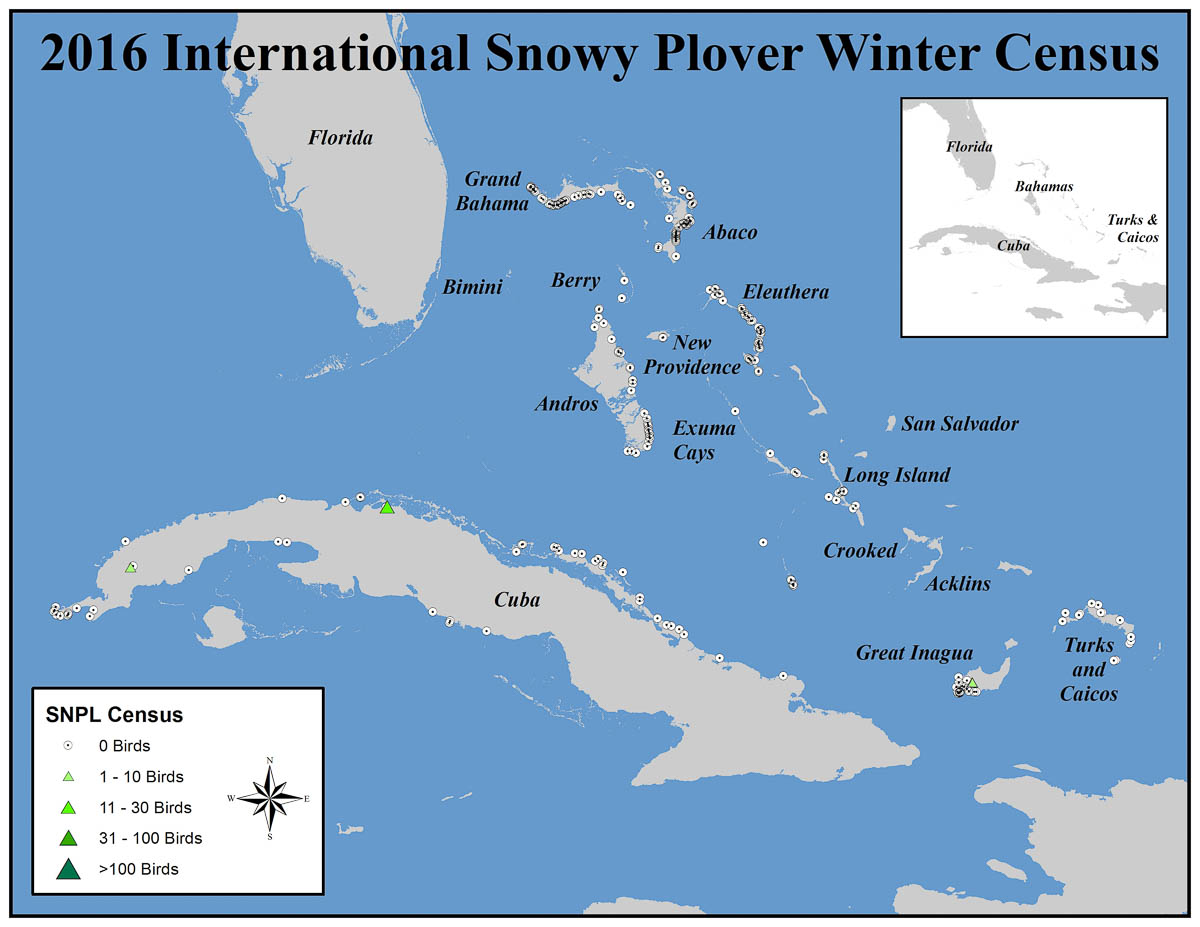
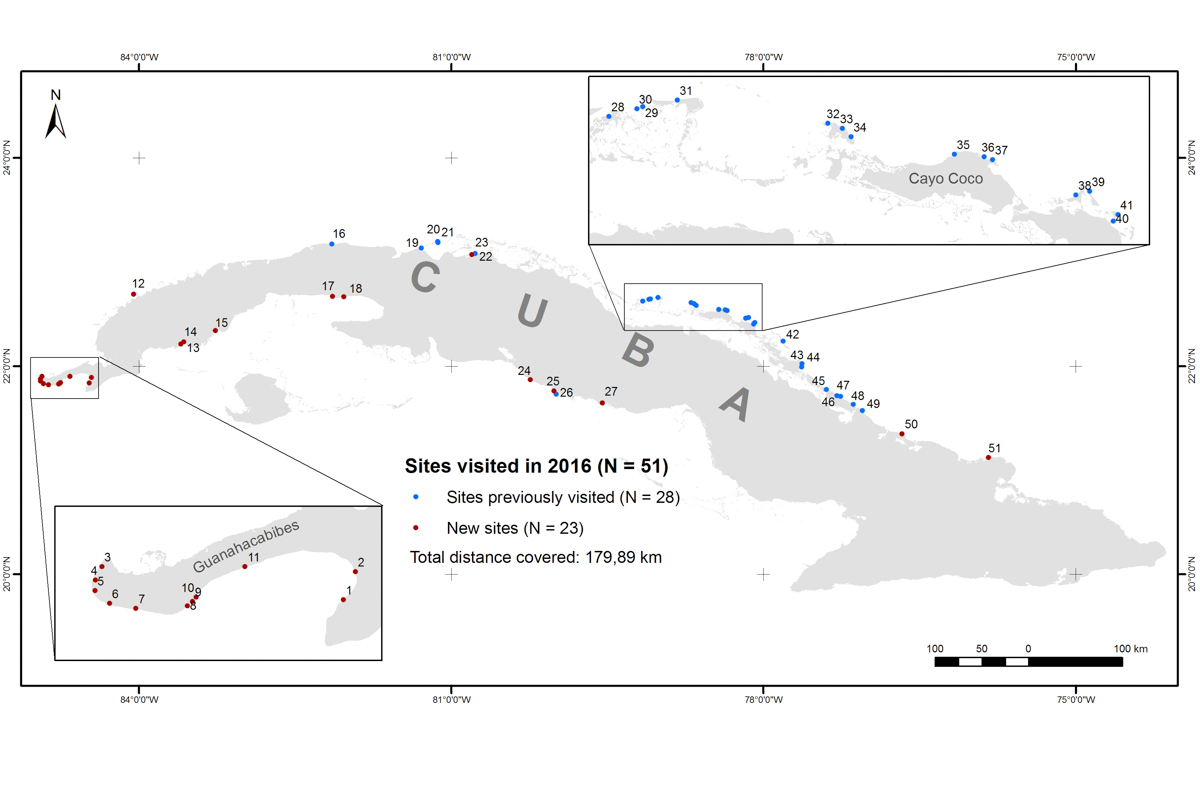
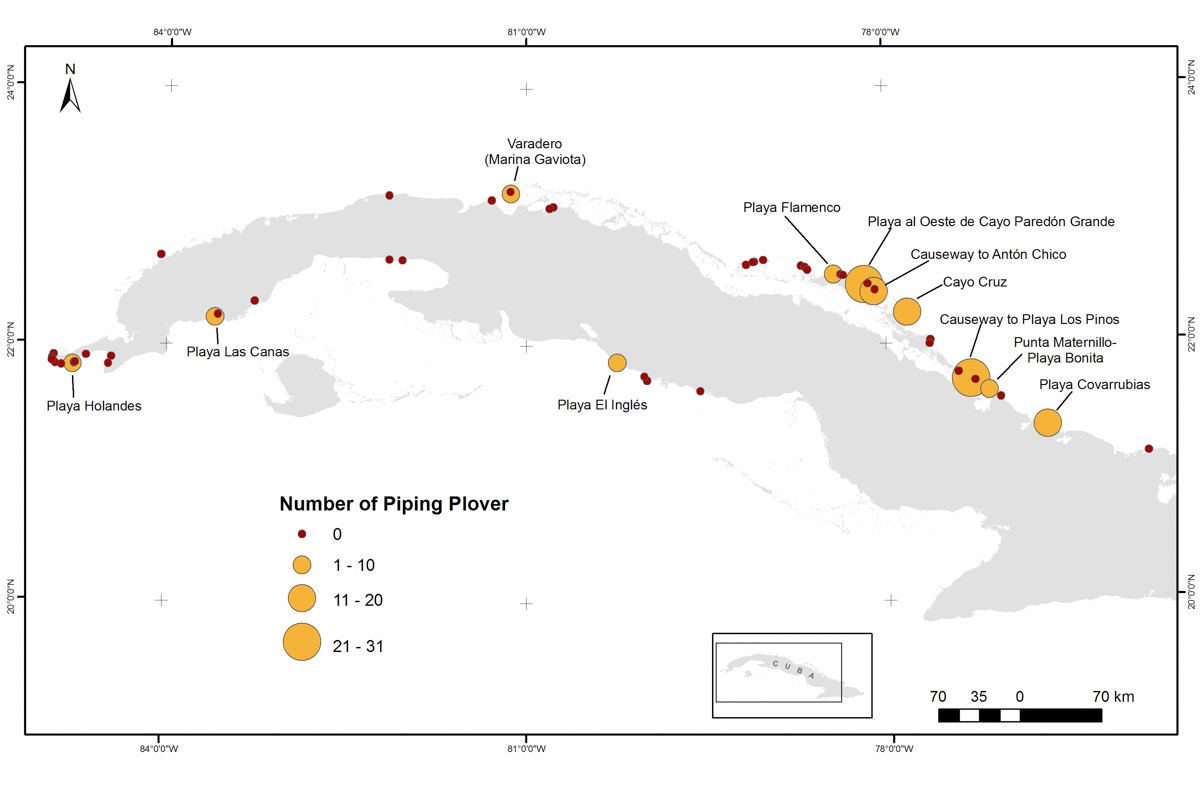
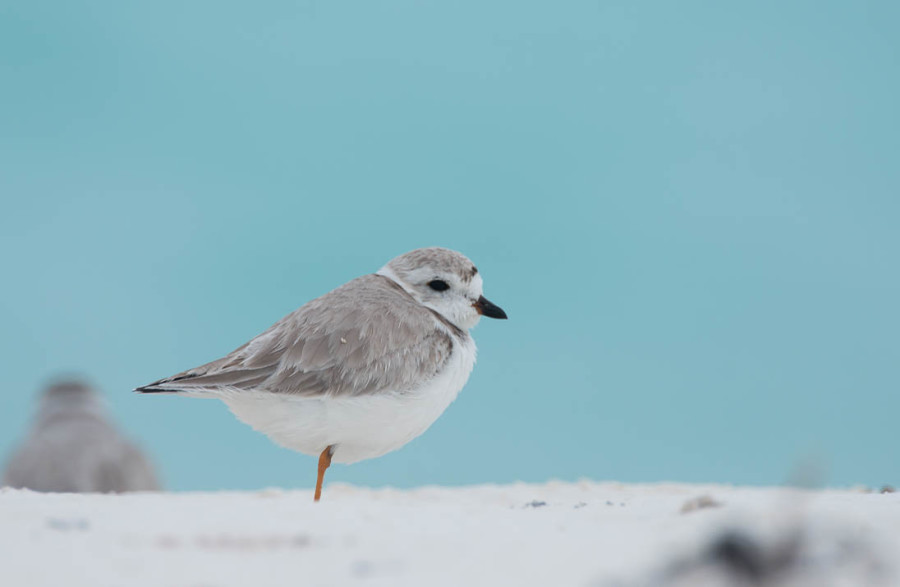

Excelent article! I love this bird, I wait for it every year in Puerto Rico, where it is a rare winter visitor. It’s been like 2 or 3 years that I haven’t seen it. I hope to have a surprise soon.
So good to hear from you Luis, we love this bird too! It’s a little surprising that you don’t find more Piping Plovers in Puerto Rico. Keep looking and yes, we hope for a surprise soon!
Great article, this is the first information that I’ve read on the the 2016 census. Just waiting to hear from our friends at CWF. We have four banded birds where I work here at White Point Beach Resort n Nova Scotia, so we are always excited to hear how the plovers are doing on the wintering grounds they were banded in 2014. And especially happy to hear if any of our banded birds are sighted. The first winter after they were banded, four were spotted in the Bahamas and Cuba, it was fascinating. Since then, we have continually been able to follow their travels and all but one were spotted back in Nova Scotia this year.
Thanks for the great article, love hearing about those amazing little birds.
Thanks for writing, Wendy, and for your concern for and work on these amazing birds. We in the Caribbean are captivated by the story of these little birds, and their struggles to survive. We want to do all we can to support their conservation, and knowing where exactly the birds are wintering is vital information. Finding banded birds is a real bonus—it is exciting to know about where each bird came from and how far they traveled. It links us all together and shows how important it is to collaborate on our conservation efforts. All the best to you and let’s keep in touch! Lisa Sorenson, Executive Director, BirdsCaribbean
How can I be involved in the project?
Hola Jose, The International Piping Plover official census takes place every 5 years, so the next one will be in 2021! However, the Piping Plover biologists and everyone else interested in shorebird and wetland/coastal conservation in the Caribbean would like to gather as much information as we can on this species and where it is wintering every year. We still have so much to learn, and hopefully, the knowledge will help us with conservation of important sites for shorebirds. Thus, you could get involved by carrying out a Caribbean Waterbird Census (CWC) count at a local wetland or beach often as you can from August to May (Piping Plovers could arrive as early as August). Where do you live? I could put you in touch with other persons that carry out the CWC so that you can work together. Information on the CWC count is available here: https://www.birdscaribbean.org/our-work/caribbean-waterbird-census-program/
Let me know if you have more questions and thanks for your interest! Lisa Sorenson (Lisa.Sorenson@BirdsCaribbean.org)